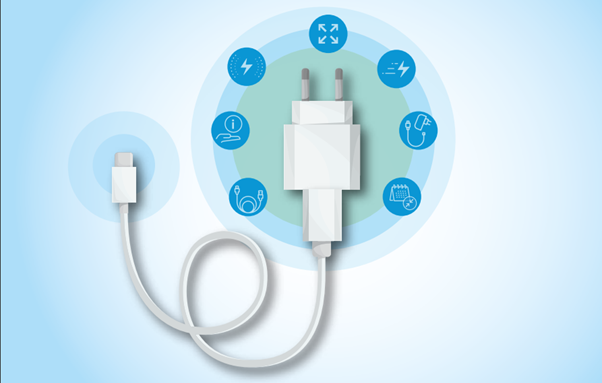Powering up sustainably: EU proposes new rules on External Power Supplies
Many of the devices we use—from electric toothbrushes and shavers to laptops, mobile phones, and tablets—have built-in batteries that must be fed electricity by an external source. Known as ‘External Power Supplies’, these products are covered by ecodesign regulations that are about to be updated. The European Commission has just published a draft revision of this legislation. What does the draft get right, and what must still be improved?

Sometimes known as ‘power adaptors’ or ‘power packs’, External Power Supplies (EPS) power or recharge electronic and electric devices. Often sold with the devices they power, we all have many such products in our homes and workplaces.
In 2020, EPS consumed 11.6 TWh of electricity—enough to cover the energy needs of 3 million EU households. To lessen their environmental impacts, we must ensure EPS use energy and resources as efficiently as possible.
The EU regulates EPS using ecodesign—and these rules are being updated. The publication of a draft regulation is an important milestone in this process. ECOS contributed to the revision of these rules, providing guidance on how to best reduce the environmental impacts of EPS. The resulting proposal is an encouraging improvement, but missed opportunities remain.
High expectations have matched with high ambition
The last revision of ecodesign rules for EPS took place in 2019 but these rules were unfortunately not ambitious enough to bring about the necessary change. Revising this law less than five years later is in itself a positive development.
Thanks largely to a broader scope covering many more products, the new draft published this week takes a much more ambitious approach. Previously, it was the products covered that had to be specified in the text. Now, it is the excluded products that must be listed, changing the default coverage of the legislation for the better.
The new proposal also establishes a series of improved requirements, including:
- Harmonised testing requirements
- More rigorous efficiency requirements
- Durability requirements
- Standby requirements for wireless chargers
The definitions of battery chargers and EPS—previously too vague—have also been further developed, limiting the possibility of potential loopholes.
To align with the EU’s common charger rules, the Commission has proposed that EPS with USB connectors should also have a USB-C port to facilitate the transition towards a common charger. Combined with provisions of the Common Charger Directive, this will result in all charging cables being interchangeable and, therefore, more easily replaced when broken.
A ‘Common Charger’ logo will be visible on every charger to indicate its compatibility with USB-C. Information on the maximum output power for the EPS and the maximum supported power for the cables will also have to be clearly visible. This will provide consumers with useful information that will help them to avoid overheating their products, wasting energy, and damaging batteries.
Wireless charging is covered, but with disappointing exemptions
The revision of ecodesign rules for External Power Supplies is a necessary step towards a more resource and energy-efficient use of these products. The draft legislation shows ambition to reduce the environmental impact of EPS, and will help to facilitate innovation in an industry that is constantly growing in importance.
However, the Commission’s proposal also has some shortcomings.
Wireless chargers and wireless charging pads are not adequately regulated, with a lot of space left open for exemptions—notably on interoperability and active efficiency. This could seriously compromise the impact of the legislation, leaving many products that need to be better controlled out of scope.
Wireless charging consumes more energy than wired charging, so, unless optimised, it is a gateway for inefficiency. While charging, a device will disperse energy if not perfectly aligned with the charging pad, consuming more than necessary and wasting energy. With energy-hungry wireless EPS fast replacing their wired counterparts, ecodesign regulations should ensure that both consume the same (reduced) amount of energy.
The path forward
Publication of this draft regulation kicks off a four-week public consultation period—with a deadline to respond of 16 December 2024. ECOS will respond to the consultation—and we invite other interested stakeholders to do the same via this web platform. This is one of your final chances to influence this important legislation.
Adoption of a final text is planned for the third quarter of 2025.

 By
By  By
By 
